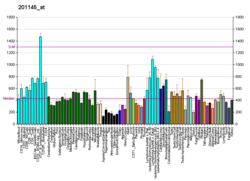HCLS1-associated protein X-1 is a protein that in humans is encoded by the HAX1 gene. [5] [6] [7]
Contents
The protein encoded by this gene is known to associate with HS1, a substrate of Src family tyrosine kinases. It also interacts with the product of PKD2 gene, mutations in which are associated with autosomal-dominant polycystic kidney disease, and with F-actin-binding protein, cortactin. It was earlier thought that this gene product is mainly localized in the mitochondria, however, recent studies indicate it to be localized in the cell body. Two transcript variants encoding different isoforms have been found for this gene. [7]
In 2015, localization of the protein to P-bodies was demonstrated. [8]




